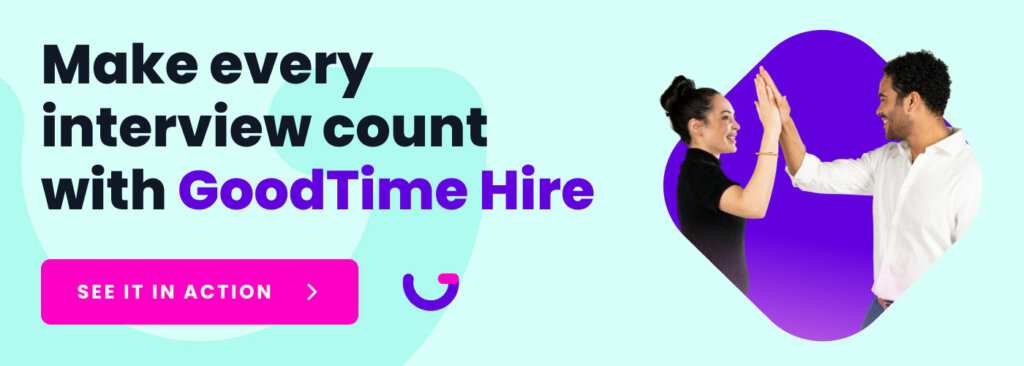We’ve said it before, and we’ll say it again: hiring diverse talent starts with diverse interview panels.
Before making a decision as important as where to build their career, candidates want to feel assured that they’ll belong within an organization. One interview can make or break that decision.
Thankfully, there are several strategies you can leverage to optimize your interview panels for diversity and inclusion in your hiring process. Read on for six tips that, collectively, will give you the results you’re looking for.
1. Acknowledge Unconscious Bias in the Room
We’re all naturally wired to make decisions and assumptions based on our unique perception of the world. Our subjective opinions are learned stereotypes—formed from our upbringing, social groups, and societal exposures—that sway our decisions, without us realizing it, day in and day out.
In order to create diverse interview panels, start by urging everyone on your team to acknowledge the part we all play in relying on unconscious bias. Create a transparent, consistent, and objective process for diversity and inclusion training so that fair hiring practices are always top of mind.
Only then can you begin to take the necessary steps to stop gut-driven decisions from influencing your hiring decisions.
2. Train Existing Employees as Interviewers
Don’t relegate interviews to the TA team. Consider adding non-HR employees to the mix, too.
By leveraging a team-based approach, you’ll gain the perspectives of employees from all over the organization. Plus, when you include them in the hiring process, you demonstrate that you value your team’s input, leading to higher levels of engagement and quick buy-in with new colleagues.
But just like the TA team, anyone who is facilitating interviews should be trained to do so. Prompt them to consider important questions like, “Are there non-verbal cues, such as appearance or fidgeting, that are affecting my overall impression?”
The more interviewers you have trained, the more diverse your interview panels can be, which not only increases the quality of your hiring decisions but also the quality of your candidate experience.
3. Encourage a Post-interview Debrief
When done right, a post-interview debrief can add tremendous value to the hiring decision.
After completing an interview, ask each team member to provide feedback based on the candidate’s hard and soft skills. To avoid the interviewers being influenced by the “loudest voice in the room,” facilitate the feedback through a digital system.
Don’t forget to discuss what the candidate might bring to your company culture. Explore candidates who can bring a diverse range of values, beliefs, and experiences that will positively impact your company. You may consider inviting a lead recruiter to mediate the discussion and challenge bias.
4. Get Candidate Feedback and Adapt
As a hiring leader, you should always be adapting, revitalizing, and updating your practices to ensure a fair and inclusive interview process.
To make that lift a little lighter, ask for candidate feedback. Candidates are eager to share their experiences with you! Plus, the simple act of asking demonstrates to candidates that diversity and inclusion matter, and that they’re seen, heard, and valued—regardless of whether they get the job or not.
Ultimately, feedback gives you the opportunity to improve your overall candidate experience. While some feedback may be hard to hear, challenging yourself to provide an equitable experience for all candidates is worth it. And when you give your candidates a welcoming space to voice their opinions—good or bad—they are much less likely to speak negatively about your organization to outsiders, potentially harming your employer brand.
5. Provide a Standardized Interview Process
Before walking into an interview, make sure that your process is structured. Instead of encouraging free-flowing conversations, ask each candidate the same set of questions, in the same way, and in the same order every time.
When you focus on a structured, data-driven interview, you will evaluate candidates based on a strict set of criteria, which greatly improves the quality of hiring decisions. And by evaluating all candidates on a level playing field, decisions will be much more equitable as well.
6. Use Technology and Tools To Minimize Bias
While you can’t completely eliminate bias from the interview process, you can significantly minimize the impact by adding one more key member to your hiring team: technology.
The right technology will automate and accelerate your hiring efforts, empowering you to gather deeper data and make better decisions.
GoodTime Hire boosts your team’s interviewing skills with powerful interviewer training paths. This effectively broadens your interviewer pool and reduces hiring bias right from the start.
Discover how GoodTime Hire’s interview scheduling software can transform your talent acquisition process.





